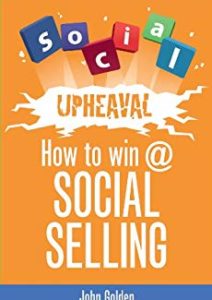Your current customers can be your best, untapped source of advocacy for your company, business, product, or service. But many organizations don’t know how to utilize their advocates to their full potential, and don’t have a concrete plan to obtain and maintain advocates. This article provides concrete actions to help salespeople and sales companies effectively customers that have become advocates.
Reference vs. Advocate:
All advocates are references, but not all references are advocates. When you secure a reference, it is usually done by a salesperson contacting the customer and asking them to support you or be a testimonial to what you’ve done for them. As a reference, they are passively responding to a request. An advocate, on the other hand, is so moved by the experience that they had with you that they will proactively support you, introduce you to others, and be a champion for you in the marketplace. This happens proactively.
- Ask your marketing team the stories that references and advocates are telling.
Steps and Strategies:
Create conversations with your customer, and facilitate mutually getting to know each other on a personal level. People often don’t spend the time getting to know each other so that concerns can be intimately discussed. Another way to move your buyer from customer to advocate is to try to figure out what success looks like for them. Understand their strategic objectives, and utilize metrics to measure if the customer has achieved their idea of success or not. If the customer has achieved success, it stands to reason that they will advocate for you. Finally, ensure that you have a strategy for encouraging advocacy. Often, salespeople take a passive role in ensuring that their customers become advocates, which is to their detriment.
- Get to know your customer and facilitate the formation of relationships and trust. That is the key to long-term engagements and advocacy.
- Understand the customer’s goals and what success looks like to them, and then help them get there.
Create a strategy to encourage and facilitate advocacy.
Leveraging Advocates Long Term:
Once you have moved a client from customer status to advocacy status, there are some things you can do to effectively leverage their position. Advocacy is in the moment, and there is no guarantee that you will maintain them long-term. The world is continuously changing, and the demands that each person is continually changing, which means that value is constantly changing. This means your advocate could see you as more or less valuable down the line. Ensure that you stay connected with your advocates, and help them to maintain their view of you as valuable. Additionally, customers love to speak about their success, so if you have a customer who is a particularly good advocate, use them!
- After you’ve developed your advocate, connect with multiple stakeholders and other business leaders within the organization to expand your footprint within the company.
- Find other customers similar to your advocates. Share your advocate’s story, and how you helped them solve their problem with new potential clients. This will not only show them that you understand what they’re going through, but it will encourage them to become an advocate as well.
- Bring in your top advocates to speak to your organization or potential buyers. It gives them a networking platform and makes them feel valuable, and it creates a memorable story for future customers that develops trust.
Turn Around Former Advocates:
There are times when a customer feels as if they can no longer advocate for you. This is a detrimental, devastating loss that you want to correct as quickly as possible if you can. Many things could cause this shift in perspective. Perhaps there was a miscommunication or a structural reason within the organization as to why there isn’t alignment.
- If it is not recoverable, the goal becomes to ensure that there is not hostility or a dynamic that would damage your company’s reputation.
- Continuously have a pipeline of advocates. Just like you manage pipeline metrics for your customers, it’s essential to maintain the same metrics for advocates.
- The first step is to examine what happened, and why the salesperson or organization went wrong.
- Explore what expectations weren’t met, and how you can rectify the situation and satisfy their expectations.
- Turn the situation into a comeback story after you repair the relationship with your advocate.
- You can turn a customer around if you are honest with them.
Practical First Steps:
If you don’t already have an advocacy program in place or are unsure about how to turn customers into advocates, there are some critical first steps to take.
- Learn to listen to your company. When you listen, you can understand them. When you can understand them, you can help them. If you help them, they will want to be advocates.
- Ensure there is structure to your approach.
- Ensure your entire organization the company culture fosters advocacy.
Information for this article was sourced from this top sales professional panel discussion, hosted by John Golden, featuring the expert opinions of Dennis Synal, Joel Capperella, and Adrian Davis.














Comments